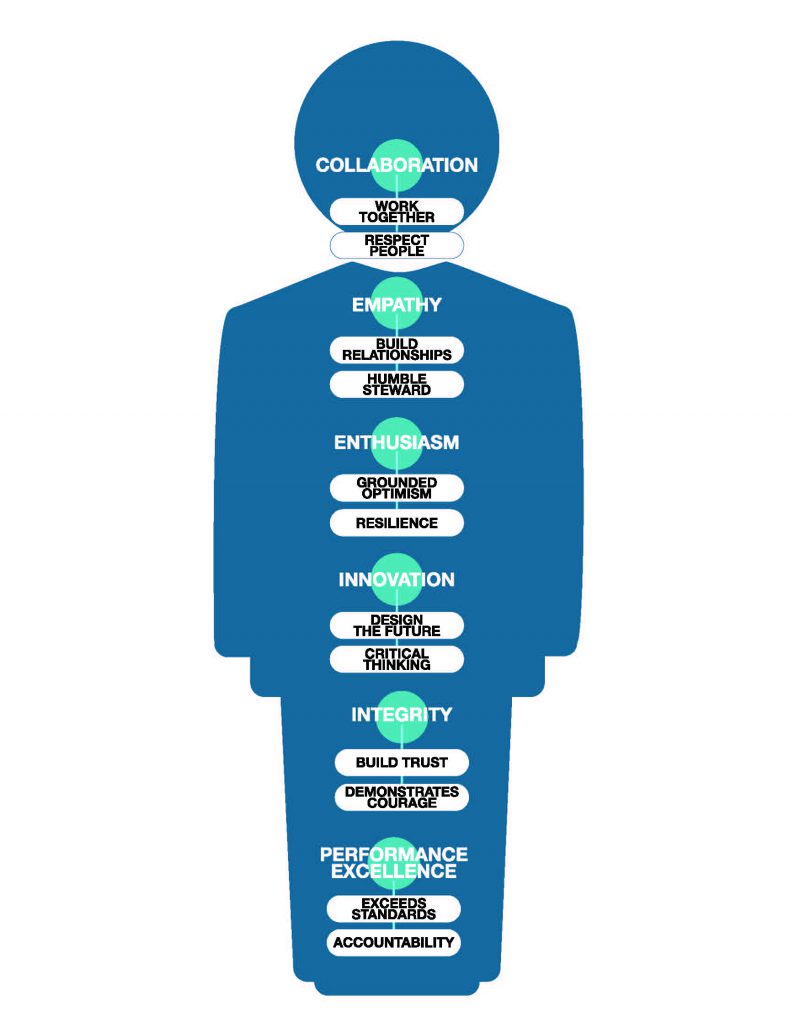Hospitality Leadership Solutions Series: The ‘Organizational Spinal Cord’
The ‘Organizational Spinal Cord’ – Energizing Brand Winners in Today’s Service-Hospitality Landscape
Going beyond core values and company culture (as published in Hotel Management, January ’19)
Noted hospitality thought leaders and corporate governance/ performance management experts Kefgen and “Dr. Jim” share common management challenges while providing time-tested, field-tested or just simple “quick-fix” ideas to keep professionals inspired, effective and successful.
Beyond Core Values & Company Culture
Core values reflect beliefs, and company culture reflects attitudes and behaviours – together they define the “heart” and perhaps even the “conscience or soul” of an organization. But, beyond these traditional HR and leadership tenets is the more fundamental concept of what we call the organizational spinal cord.
In medical terms, the spinal cord is a bundle of nerves that go to and from the brain. Its main function is to transmit neural inputs between the brain and the periphery of the body. In business terms, the organizational spinal cord is the nervous system responsible for stimulating and directing critical actions across the entire “body” of an organization. Beliefs and attitudes define why a company is in business and what it stands for, but the spinal cord is about how the company actually implements its strategic and tactical initiatives.
Dissecting the ‘Nervous Systems’ of Brand & Market Leaders
To understand what defines the organizational spinal cord of today’s trend-setting hospitality businesses, Aethos Consulting Group™ studied the mission statements, website information, and Glassdoor.com reports of 17 top hospitality companies. The target companies – chosen for their demonstrable branding power, leadership, and market performance – included the following:
What did our review and analysis show? Despite differences among their geographic locations, product and service offerings, market segmentation, and corporate governance structures, there seemed to emerge a set of shared tenets driving their operational practices. Simply stated, we identified six variables that defined a common “organizational spinal cord” across these top companies.
Revealing the ‘Organizational Spinal Cord’ of Top Hospitality Brands
Below is the “spinal cord” we conclude is stimulating today’s top hospitality brands – inside and outside the hotel world. It might appear deceptively simple or intuitive, but notice it consists of six meta-variables (ordered alphabetically), with each defined by two primary variables. This spinal cord forms a “nerve pathway” of key performance indicators (KPIs) that integrates Execution, People, and Cognitive practices.
We might summarize the function or ideal outcome of this spinal cord as “To take control of individual actions (reactive or proactive) to steer solutions that promote coordinated success across the collective of the organization.”
Some Key Takeaways
Using our model as a template for organizational success, hotel companies (and any service-driven companies) can apply several of its insights and learnings to their HR and Leadership practices:
- Passion to the point of proactivity. Team members up and down the organizational chart are not passive subordinates, but rather their engagement with the business and industry motivate energy and actions that are mainly proactive versus reactive.
- Solution-driven actions. Team member actions are neither aimless nor superficial, but rather reflect a concern for the individual and collective success of others within and across functions.
- Sense of control drives accountability. Team members are legitimately empowered to think and act as business owners.
- Enterprise mindset. Team members empathically understand and respect one another’s perspectives and needs and how these are all interrelated and contribute to the company’s financial and branding success.
Fundamentally, our model suggests that “organizational effectiveness is, in part, directly dependent on assimilating the inputs among separate functions to create and sustain a holistic enterprise mindset” versus promoting an attitude of “silos.”
The traditional hierarchy of yesteryear simply does not work in today’s flatter, dynamic economy. Coupled with how younger workers prefer to work and collaborate, hospitality leaders need to rethink how they connect their operating models to their values and culture. This evidenced-based “organizational spinal cord” is intended to stimulate that very process.


